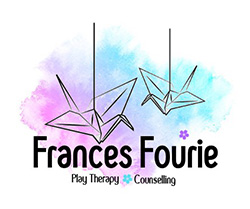Helping children to move from co-regulation to self-regulation
Many people think that being regulated means being calm, but that isn’t always the case. From a Play Therapy Perspective, regulated means I’m mindful and aware of myself. In a moment of regulation, I can think clearly, I can make a conscious choice, I’m able to notice my breath, I’m able to feel grounded, I can speak clearly and I have an experience of being in my body. I’m connected to myself.
Lisa Dion
What is Co-regulation?
Co-regulation is the process by which a child learns to regulate their emotions and behaviour with the guidance and support of a trusted adult. It involves attunement, empathy, and responsive interaction to help a child navigate their feelings and build emotional resilience.
Why is Co-Regulation Important?
Co-regulation plays a crucial role in a child’s emotional and social development. It helps children:
- Develop self-awareness: Children learn to recognize and label their emotions.
- Build emotional regulation skills: They learn how to cope with and manage strong feelings.
- Form secure attachments: Co-regulation strengthens the bond between children and their caregivers.
- Enhance social skills: Children can better relate to and connect with others.
Practical Tips for Implementing Co-Regulation at Home:
- Stay Attuned: Pay close attention to your child’s emotional cues.Notice changes in their tone of voice, body language, and behavior to identify their emotional state.
- Create a Safe Space: Establish an environment where your child feels safe to express their emotions without judgment or punishment.
- Empathise: Validate your child’s feelings by saying things like, “I can see that you’re feeling upset right now.” Show empathy to help them feel understood.
- Use Active Listening: Encourage your child to talk about their feelings and concerns. Ask open-ended questions and listen actively without interrupting.
- Model Self-Regulation: Children learn by observing. Demonstrate healthy ways to cope withstress or frustration, such as taking deep breaths or using positive self-talk.
- Set Limits with Love: While allowing emotional expression, establish clear boundaries and rules to help your child understand limits and expectations.
- Stay Calm: It’s important to manage your own emotions as a parent. Your calm presence can be reassuring to your child in difficult situations.
- Problem-Solve Together: Collaborate with your child to find solutions to challenges or conflicts. Encourage them to come up with ideas and explore consequences.
- Offer Comfort: Sometimes, all your child needs is a hug or a comforting touch to feel secure and loved.
- Be Patient: Co-regulation takes time and practice. Celebrate small successes and be patient with setbacks.
Conclusion
Co-regulation is a powerful tool that helps children develop emotional intelligence and resilience. By implementing these strategies at home, you can strengthen your child’s emotional well-being and create a nurturing environment where they feel safe to explore their feelings and experiences.
Remember that each child is unique, and co-regulation may require adjustments to suit their individual needs. Don’t hesitate to reach out to a play therapist for additional guidance and support.

